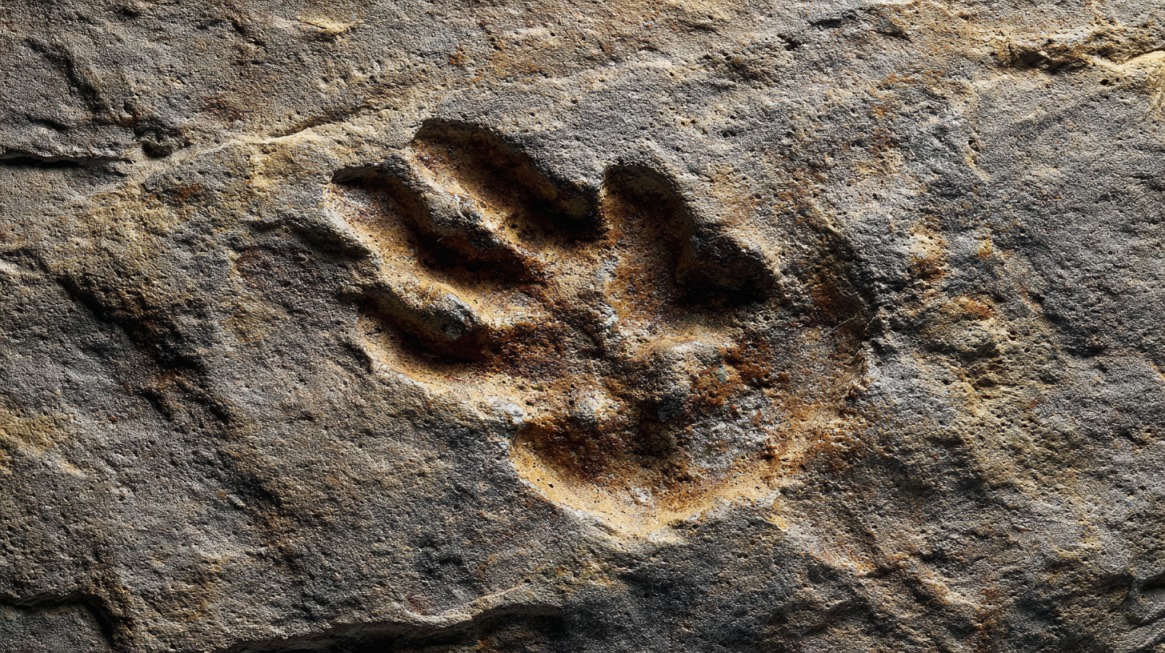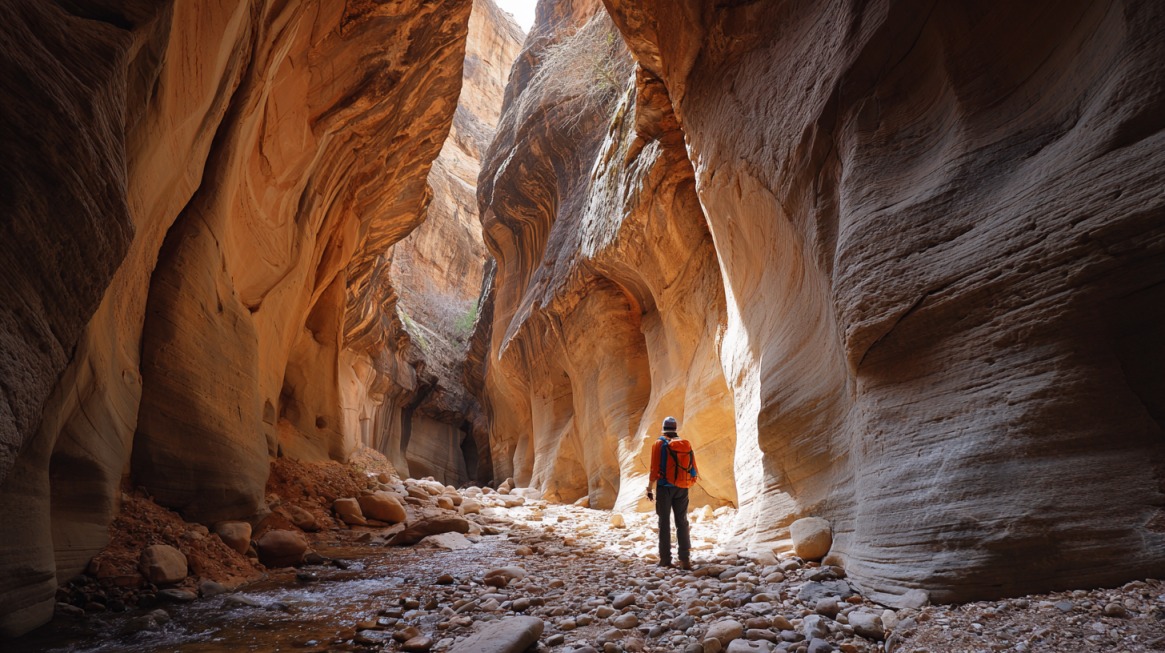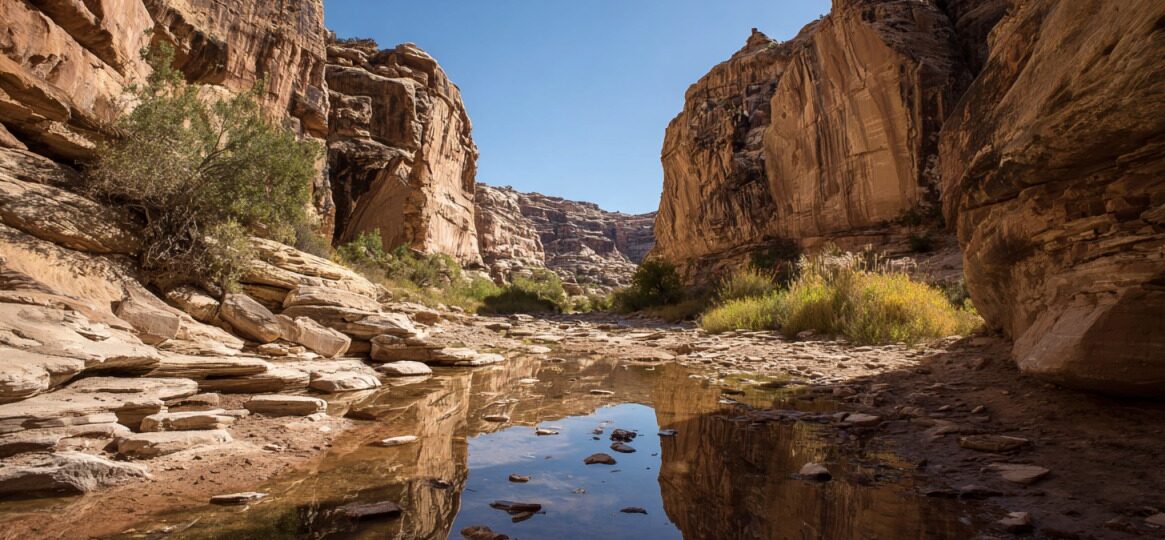Big Water, Utah captures the imagination of travelers seeking prehistoric discoveries, striking desert scenery, and stories of rebellion.
Located along Highway 89 near the Arizona border, the town serves as a gateway to Grand Staircase–Escalante National Monument and Lake Powell.
Visitors find an unusual blend of science, history, and outdoor adventure waiting to be explored.
Adventurers, hikers, and dinosaur enthusiasts flock here for its fossil beds, narrow canyons, and scenic drives that stretch through ancient rock formations.
The Geological & Paleontological Wonderland
Big Water offers more than sweeping desert views; it represents one of the most scientifically significant fossil regions in North America.
Layers of sandstone and shale conceal an ancient world of dinosaurs, plants, and ecosystems that thrived nearly 75 million years ago.
Paleontologists flock here for discoveries that continue to reshape scientific theories about prehistoric life. Visitors drawn to the mysteries of Earth’s history find themselves surrounded by natural wonders and well-preserved evidence of the past.
Big Water Visitor Center (Grand Staircase–Escalante National Monument)
Big Water Visitor Center serves as the starting point for anyone eager to learn about the prehistoric treasures beneath Utah’s sunbaked cliffs.
Exhibits capture the grandeur of the Late Cretaceous era, when the region was a subtropical floodplain teeming with giant reptiles, crocodiles, and early mammals.
Visitors find an engaging mix of education and exploration that appeals to all ages.
- Late Cretaceous mural that vividly depicts the environment where dinosaurs once roamed.
- Interactive displays designed for hands-on learning about local geology and fossilization.
- Paleontology exhibits showcasing newly discovered species unearthed nearby.
@crazyfamilyadventure Grand Staircase-Escalante National Monument in Utah is gorgeous!! Here is our list of things to do. Link in bio for all the details! Scenic Drives In Grand Staircase-Escalante 🚗 Hwy 12 🚗 Burr Trail into Capitol Reef 🚗 Norton Road 🚗 Hells Backbone Scenic Byway Hikes in Grand Staircase-Escalante 🥾Wire Pass to Buckskin Gulch 🥾Calf Creek Falls 🥾Peek-a-Boo and Spooky Slot Canyon Hike 🥾Zebra Slot Canyon 🥾Coyote Gulch Other Places To Visit 📍Escalante Petrified Forest State Park 📍Anasazi State Park Museum Where to eat in Grand Staircase-Escalante 🥪Food Truck – Magnolia’s Street Food 🥪Kiva Koffeehouse 🥪Esca-latte Restaurant #hiking #hikeutah #utah #grandstaircaseescalante #grandstaircasenationalmonument #familytravel ♬ Love You So – The King Khan & BBQ Show
Educational programs suitable for children and adults.
Over fourteen new dinosaur species have been described since 2005, including remarkable finds such as Gryposaurus monumentensis and Nasutoceratops titusi. These discoveries established Big Water as a major hub for scientific research.
Visitors not only learn about the fossils themselves but also about the rigorous excavation process that reveals them. Amenities such as accessible parking, restrooms, and shaded picnic areas enhance the comfort of the visit.
Staff members are always available to share updates on ongoing digs, provide safety advice for desert travel, and guide travelers toward other paleontological points of interest in the area.
Local Dinosaur Track Sites
For those seeking a more tangible connection to prehistoric life, the nearby dinosaur track sites offer an unforgettable experience.
Across the region, preserved footprints mark where massive creatures once crossed ancient wetlands and riverbeds.
Standing before these fossilized tracks brings a sense of wonder and humility, reminding visitors that Big Water sits upon a page of Earth’s living history.
Scientists use these trackways to piece together stories about dinosaur movement, hunting behavior, and environmental adaptation. The tracks often show herds of herbivores pursued by carnivorous predators, giving researchers clues about social behavior and ecological balance.

- Accessibility: Many track sites are reachable by vehicle or a short hike, though some require four-wheel drive.
- Preservation: Footprints must not be touched or altered in any way to protect their scientific integrity.
- Interpretive signs: Some areas include information panels explaining the geology and significance of the tracks.
Visitors leave with an enriched perspective on the prehistoric world and a new respect for the fragile remains that continue to educate and inspire.
A Town with a Radical Backstory
Before becoming a base for fossil hunters and adventurers, Big Water had a past as unconventional as its scenery.
Its story begins in the mid-20th century, when it emerged as a construction town, and later transformed into a haven for free thinkers, activists, and independent spirits.
Few desert towns have experienced such a dynamic evolution, from practical origins to political rebellion and modern serenity.
Origins: Glen Canyon City
View this post on Instagram
The first version of Big Water appeared during the 1950s under the name Glen Canyon City. The settlement was established to house workers building the monumental Glen Canyon Dam, one of the largest civil engineering projects in the American Southwest.
Workers and their families turned the dusty site into a bustling community, complete with small shops, gatherings, and recreational activities along the nearby Colorado River.
Life revolved around the dam’s construction, but camaraderie thrived among the residents. Once the project concluded, many left for larger cities, while others stayed, drawn to the desert’s silence and spaciousness.
The foundations laid during those years created the basis for the town’s later rebirth as Big Water.
The Alex Joseph Era & Sagebrush Rebellion
The 1970s brought a dramatic shift when Alex Joseph arrived, a man determined to challenge conventional authority. A self-described libertarian and polygamist, Joseph founded the Church of Jesus Christ of Solemn Assembly, preaching independence and self-rule.
Under his leadership, Big Water became a symbol of resistance during the Sagebrush Rebellion, a movement protesting federal control of Western lands.
- Marijuana decriminalization, decades before national conversations on legalization began.
- Royal Guard military school, intended to train followers in discipline and self-sufficiency.
- Town cemetery on federal land, an act of defiance that led to legal battles.
- Formation of “Long Haul” compound, where his followers practiced communal living and alternative governance.
His influence made Big Water famous for its maverick spirit. While his methods were often controversial, they established the town’s identity as a place where personal liberty comes before convention.
Incorporation and Modern Day
By 1983, Big Water officially incorporated as a town, embracing both its rebellious past and new beginnings.
Modern residents carry forward that independent mindset while focusing on community, sustainability, and tourism. The population now hovers around 500 people, many drawn by the peace and open landscapes surrounding Grand Staircase–Escalante National Monument.
Today’s Big Water maintains its libertarian reputation through minimal bureaucracy and strong local involvement.
Locals take pride in their history, seeing it not as an oddity but as a testament to endurance and self-determination. Visitors sense that legacy in conversations with residents who still prize autonomy and personal freedom as defining values.
Hiking, Slot Canyons & Scenic Backroads
Adventure travelers find Big Water a perfect base for discovering the slot canyons, desert trails, and scenic routes that define southern Utah’s wilderness.
The region offers everything from gentle hikes to challenging expeditions, appealing to those who crave both solitude and spectacle.
Before venturing into the desert, it’s important to prepare adequately, as the terrain can be unpredictable.3

Slot Canyon Adventures
Slot canyons near Big Water deliver an extraordinary hiking experience through sculpted corridors of sandstone. Each canyon holds its own character and level of difficulty, attracting photographers, climbers, and nature lovers.
- Wiregrass Canyon: A 5.2-mile round-trip hike with moderate difficulty, ideal for families and beginners.
- Buckskin Gulch: One of the world’s longest slot canyons, presenting challenging terrain and potential flash flood risks.
- Paria River Canyon: A colorful and winding route requiring a permit and careful navigation.
Hikers are advised to bring extra water, check weather reports, and carry navigation tools, as conditions can change quickly. Rangers often remind visitors that flash floods occur even miles away from rainfall sites, emphasizing caution in all canyons.
Scenic Backroads & Off-Roading
Those seeking panoramic drives will find some of Utah’s best unpaved roads in Big Water’s backyard.
Remote routes wind through towering cliffs, badlands, and desert basins that seem untouched by time. The sense of discovery is heightened by the absence of traffic and the vastness of the open desert.
- Cottonwood Canyon Road: Roughly 46 miles of scenic drive connecting Big Water to Cannonville, passing through multicolored rock layers and dramatic ridgelines.
- Smoky Mountain Road: A rugged 78-mile route leading to Escalante, featuring steep ascents, high plateaus, and expansive views of Lake Powell.
Both roads demand caution, particularly after rain. Travelers should carry spare tires, water, and fuel, and inform someone of their route before departure.
Patience, preparedness, and a spirit of adventure turn these drives into unforgettable experiences across Utah’s backcountry.
Planning Your Visit
Preparation is essential when visiting Big Water due to its remote location and limited amenities.
The reward for planning ahead is access to one of the most striking and educational destinations in the Southwest, where paleontology meets adventure.
Accessibility & Visitor Info
Big Water Visitor Center remains the best first stop for orientation.
- Free entry with air-conditioned exhibits.
- Accessible restrooms and parking.
- Detailed maps for hiking and backroad routes.
- Information on fossil sites and safety guidelines for desert travel.
Families, researchers, and solo travelers appreciate the center’s balance of education and exploration, setting the tone for a fulfilling visit.
Accommodations & Supplies
Visitors should plan logistics carefully, as Big Water offers limited services. For overnight stays and meals, most choose nearby towns such as Kanab, Utah, or Page, Arizona. Both destinations offer hotels, restaurants, and convenience stores.
- Fuel up before entering remote areas.
- Carry extra water and snacks for desert travel.
- Check road conditions with the Bureau of Land Management before departure.
Big Water’s quiet environment provides the perfect retreat after a day of hiking or off-roading, especially for travelers seeking a slower, more reflective pace.
Leave No Trace & Permits
Preserving Big Water’s fragile environment ensures that future generations can enjoy its wonders.
- Pack out all trash and food waste.
- Stay on established trails to prevent erosion.
- Avoid touching fossils or disturbing wildlife.
Permits are required for certain hikes and backroads, particularly within Paria Canyon and Grand Staircase–Escalante National Monument. Obtaining them in advance through the Bureau of Land Management helps protect both visitors and sensitive environments.
@wmtb__ Big Water Utah is like riding on the moon. • #mtb #fypage #camping ♬ original sound – ezbw
Summary
Big Water, Utah, shines as one of the Southwest’s most fascinating destinations.
Fossil hunters, history enthusiasts, and road-trippers alike find something remarkable among its sandstone cliffs and rebellious past.
The mix of prehistoric wonder, human eccentricity, and untouched terrain creates a rare experience for those seeking discovery off the beaten path.

